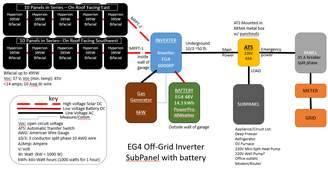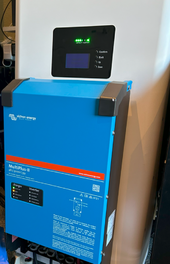Nothing about specifications just wanted to tell you how my wife's attitude changed.After lots of feedback, I've designed this and am looking for holes in the design. Would like to pull the trigger soon and purchase parts since they have 1-20 month lead times and winter is coming.

Schematic for EG4 off-grid system. I think I'm going to pull the trigger soon and buy parts.
After lots of feedback from this forum, I think I'm going to go with this design. If you find any holes in it please let me know.diysolarforum.com
View attachment 227966
View attachment 227967
I started with a tiny 1.6kw system just runs the fridge, my home server, lights and fans my battery is just a small deep cycle FLD that can run 2 fans some lights and the fridge/Server during a power cut I didn't want to cycle the battery so we power from the grid at night. During the day when power is free we run 10 or so fans flowing air throughout the house every day I would tell my wife we saved 70¢ today/saved 40¢today(she looked at me like I'm an idiot,TBF I am).
First monthly bill came in we saved like $14 boss was slightly impressed.
First power cut and her attitude changed to "do you think we should power the whole house with solar"
Guess I should say many wives have bad expectations for our projects but once our toys exceed expectations to their benefit they generally support us whole heartedly, atleast that's my experience.






